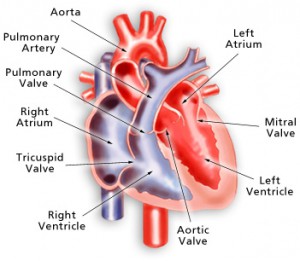Aortic valve stenosis is the most common valvurar heart disease in the Western World. An estimated quarter of a million elders are diagnosed with it annually. It occurs when the heart’s aortic valve stiffens and narrows over a long period of time. The condition can result in heart failure and symptoms include tiredness, shortness of breath, fainting, and chest pain.
In the past, aortic valve replacement surgery was the only treatment available for aortic stenosis. This surgery involves opening the chest and stopping the heart in order to replace the malfunctioning valve. This is a big operation, so many elderly patients decide to avoid it.
Currently, patients have another option: transcatheter aortic valve replacement (or T.A.V.R.), which is a relatively new technique. This procedure involves a catheter (that’s usually inserted through the groin) that delivers a new valve. It is usually done without anesthesia, but unlike aortic valve replacement surgery, it doesn’t require a big incision.
This may seem like a step forward, but in some cases, patients face complications that outweigh its benefits, so traditional surgery may be a better choice for some people. For instance, within thirty days of the procedure, 7.6 percent of T.A.V.R. patients (with the median age of 84) die, and half of the fatalities are due to non-cardiac causes. Also, 2.8% of the patients suffered a stroke and 2.5% needed kidney dialysis. And after a year, these percentages increased.
In contrast, traditional surgery has a lower risk of stroke and a lower morality rate. It also requires longer hospitalizations for most patients and longer recovery rates, which is a risk for elders.
Choosing between aortic valve replacement surgery and T.A.V.R. is a difficult endeavor. Elders and their families must weigh the advantages and disadvantages of each procedure. The main problem is that there’s not a lot of information about the risks of T.A.V.R. since it’s a new procedure. The best way to research your two choices is by questioning your cardiologists and getting second opinions. There may also be T.A.V.R. educational sessions available in your area. That information can be found on the website www.newvalve.com. When making their decision, it’s important for elders to decide whether or not the benefits of T.A.V.R. outweigh its risks, but nothing is certain when it comes to the procedure at the present time.

